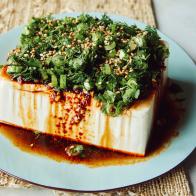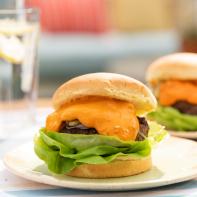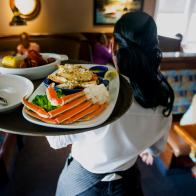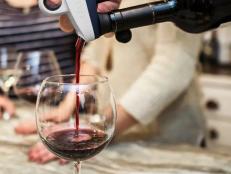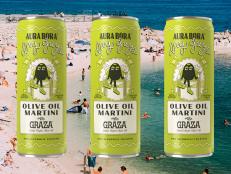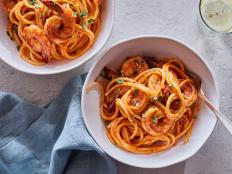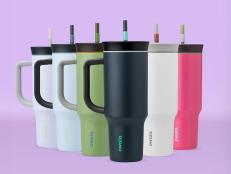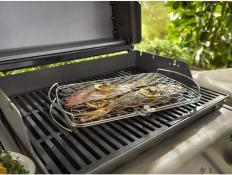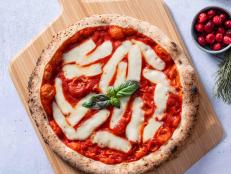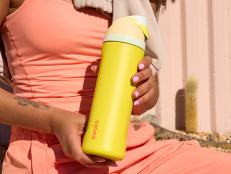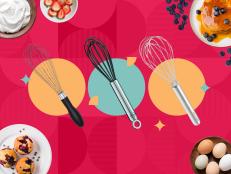The Next Low-ABV Drink You’re About to Be Obsessed With
And, no, it's not another hard seltzer.

Morsa Images
Food and beverage trends tend to come and go at lightning speed (remember rainbow bagels, sushi burritos, and "activated charcoal" everything?) But there’s one emerging drink category that many experts agree is here to stay: low-ABV beverages.
What Is Low-ABV?
ABV stands for "alcohol by volume" and refers to the total percentage of a product that is straight alcohol. The highest ABV drinks include distilled spirits like vodka, gin or tequila, which are 45-55% ABV, whereas beer and hard seltzer round out the low end of the spectrum at around 4-7%. The majority of wines are in the 12-15% range, with some going as high as 16% and fortified wines like port and sherry at 20%.
There is no industry-wide definition of what exactly constitutes “low-ABV,” but for each beverage category, it’s fair to say that drinks coming in lower than the standard range can qualify.
The Rising Popularity of Low-ABV Drinks
It doesn’t seem like that long ago when trendy drinks of choice were strong and boozy: High-end tequila and mezcal served neat, dirty martinis, bourbon old-fashioneds and even robust, high-alcohol wines like California Cabernet were ruling the bar scene.
However, for the past few years, consumers have been turning away from high-alcohol beverages and embracing lighter libations. One of the first clues that drinkers’ preferences were shifting was the wild popularity of the spritz, which combines a low-ABV liqueur with Prosecco and seltzer. The spritz became known as the low-alcohol cocktail you could easily sip poolside all day long, and still be fresh enough to hit the town that evening. It’s one of the most newsworthy (and controversial) drinks of the past few years, with consumers everywhere clamoring for the festive orange sipper. In 2017, Aperol sales went up 48%.
The next buzzworthy beverage to claim the low-ABV crown was the now ubiquitous hard seltzer category – and that trend shows no signs of slowing down: According to The Spirits Business, hard seltzer volume sales are already outpacing vodka (the former top-selling alcohol category) and sales are expected to triple in the U.S. by 2023.
Most experts attribute the desire for low-ABV drinks as an extension of the rising wellness industry. Alcohol is calorie-dense. It has 7 calories per gram (almost as much as fat, which has about 9 calories per gram), so the higher the ABV, the more calories you’re looking at. This is hugely helpful to know, because a lot of alcohol packaging doesn’t include calorie counts or nutrition labels.
Sugary juices and syrups, unavoidable in many cocktails and mixed drinks, up calorie counts even more. So, a low-ABV can of hard seltzer can be an appealing choice for those watching their caloric intake.
Other reasons to choose a low-ABV drink would be that the less alcohol you imbibe, the less ends up in your bloodstream, cutting short the amount of time between your last sip and when you’re good to drive again. Low-ABV drinks also provide a less intense buzz that can extend your longevity at your next social gathering. And finally, less alcohol also means a smaller chance of waking up with a brutal hangover.
The Next Low-ABV Drink to Look Out For: Piquette
Spritzes and hard seltzer, and even cider and beer, are indeed great low-ABV options. But what’s out there for wine lovers?
The answer: a not-so-new but newly re-emerging drink called piquette! Piquette is not wine, but rather a low-alcohol, sustainable byproduct of winemaking that’s light, effervescent, juicy and extremely refreshing. It's been named one of Food Network's trends for 2020.
When winemakers produce wine, there’s lots of grape skins and stems left over after the juice is pressed. These leftovers are known as pomace. Rather than throwing them away, or distilling them into grappa, another option is to add water to the mixture and then ferment whatever is left of the natural sugars.
This practice is amazing from a sustainability standpoint. Plus, reusing and repurposing the pomace can create another revenue stream for a winery — or at least another delicious beverage for the winery crew to enjoy at the end of a long day.
Piquette is not new. It's a traditional drink that historically was enjoyed by French and Italian vineyard workers and farmers. The alcohol content for piquette tends to come in at 4-9% ABV. When you compare that to wine that’s commonly in the 12-15% range, piquette is indeed a low-ABV alternative.
Piquettes can be a bit tart and lightly funky. Fans of sour beer and kombucha will find a lot to love in this drink. So far, the wineries making (or at least, selling) their piquette to the public are few and far between, but we’re willing to bet that we will be seeing a lot more come into the market in the next few years. Producers leading the way include Wild Arc Farm, Old Westminster Winery and Southold Farm + Cellar.
Sommelier-Approved Piquettes to Try
Related Links:


